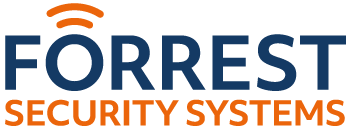Smart home technology has become an integral part of modern living across the UK. From thermostats that learn your heating habits to CCTV cameras that send live alerts straight to your phone, connected devices offer remarkable convenience and control.
However, with this new level of connectivity comes a set of risks that many homeowners underestimate.
While the idea of a fully automated home sounds appealing, the reality is that poorly secured devices can leave your property exposed to cyber threats.
As smart homes continue to evolve, so too do the methods used by cybercriminals. The more devices you connect to your network, the greater the number of potential entry points for attackers.
Understanding how these risks arise, and more importantly, how to prevent them, is essential for keeping your personal data, privacy and physical safety intact.
The Rise of Smart Homes in the UK
The UK has seen a sharp rise in the adoption of smart home devices over the past decade. Homeowners are embracing technology that simplifies daily routines, reduces energy costs and enhances security.
From Alexa-enabled speakers to smart lighting systems and app-controlled locks, these products are transforming how people interact with their homes.
The growing accessibility and affordability of such devices have made smart living attainable for almost everyone.
However, the integration of multiple connected devices can quickly complicate home security. Each gadget communicates through your Wi-Fi network and often stores personal information or behavioural data.
Without proper safeguards, this digital convenience can inadvertently create weaknesses that cybercriminals are eager to exploit.

Common Security Risks Linked to Smart Devices
One of the most common issues with smart devices is weak or default passwords.
Many users fail to change factory-set credentials, leaving their systems vulnerable to anyone with basic hacking knowledge.
Outdated firmware and software also pose significant risks; unpatched devices often contain known flaws that can be exploited remotely.
An insecure Wi-Fi network further compounds the problem, offering attackers an open door into your home’s digital ecosystem.
Beyond technical vulnerabilities, data privacy has become a major concern.
Some devices continuously collect and transmit information about users’ habits, locations and routines. Without clear consent or robust encryption, this data could be intercepted or misused.
Moreover, reliance on third-party cloud services introduces additional uncertainty, as even reputable providers can experience data breaches.
How to Identify Weak Points in Your Smart Home Setup
The first step to improving your smart home’s security is understanding where vulnerabilities lie.
Homeowners should start by reviewing the devices connected to their network and ensuring each has a secure password and updated firmware. Many routers allow you to see all connected devices, making it easier to spot anything suspicious.
Conducting a basic digital audit can reveal weak spots that need attention.
Additionally, it’s worth verifying the permissions each device requires. Some gadgets request access to more data than is necessary for their function.
Regularly reviewing app permissions, network settings, and manufacturer updates will help you stay ahead of potential risks.
Security scanning apps can also provide helpful insights into whether your network is exposed.
Practical Ways to Mitigate Smart Home Security Risks
A strong password policy remains one of the simplest yet most effective security measures. Avoid using common phrases or repeated credentials across devices, and where possible, enable two-factor authentication.
Keeping device software and mobile apps up to date ensures that the latest patches and security improvements are in place.
Routine updates may seem tedious, but they close known loopholes that hackers often exploit.
Network configuration is equally important. Use a secure router with modern encryption standards and consider setting up a separate guest network for your smart devices.
This limits the impact of a potential breach by isolating those devices from personal computers and sensitive data.
Monitoring your connected systems through dedicated apps or dashboards can also help you spot irregular activity early.
The Importance of Professional Advice and Installation
While many smart devices are marketed as easy to install, professional guidance can make a significant difference in security.
Trained installers, like Forrest Security, understand how to integrate systems safely, configure networks correctly and protect sensitive data.
They can ensure that devices such as alarms, cameras and access controls are properly secured against common attack vectors.
Professional security providers also keep pace with the latest technology and regulations, including data protection laws.
By consulting an expert, homeowners can rest assured that their systems comply with privacy requirements and function reliably.
Investing in professional installation not only enhances security but can also save time and money in the long term.
Conclusion
Smart home technology offers impressive convenience, comfort and control—but these benefits come with responsibilities. As homes become increasingly connected, the need for vigilance and good digital hygiene grows.
Simple measures, such as updating software, securing networks, and using strong passwords, can dramatically reduce your exposure to cyber risks.
Ultimately, a smart home should make life easier, not more complicated. With proper precautions and, where necessary, professional support, you can enjoy the advantages of modern living without compromising your security.
Now is the perfect time to review your setup and take steps to protect your home and data.








